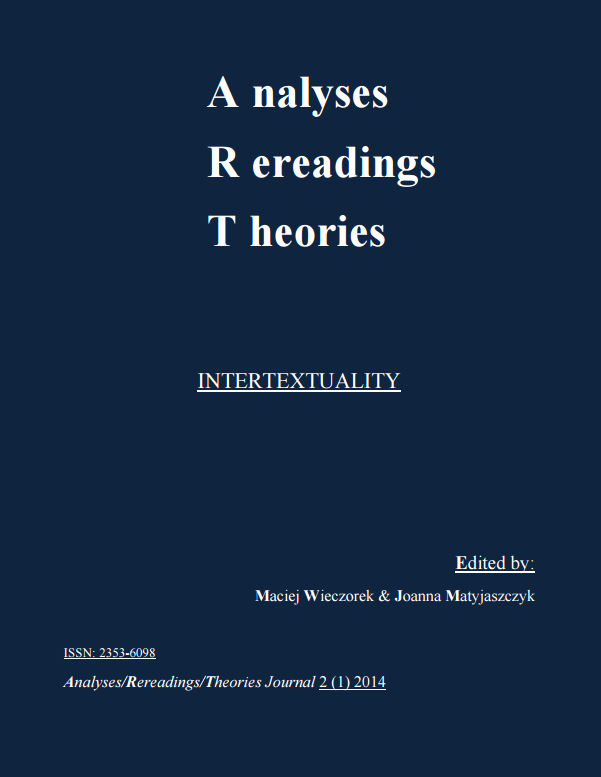Intertextuality of C.S. Lewis’ The Last Battle
DOI:
https://doi.org/10.18778/2353-6098.2.07Keywords:
Narnia, intertextuality, apocalypse, Bible, beast fable, King Arthur, RolandAbstract
The Chronicles of Narnia has an established position in the canon of children’s literature. However, what on the surface is a fairy tale involving adventures and magic; with children, kings, talking beasts, and wood spirits as main protagonists; is, in fact, a set of stories deeply rooted in Christian and chivalric traditions, containing elements of beast fable and morality tale. The story, according to Madeline L’Engle, depending on the reader's cultural knowledge and experience, may be understood on various levels, from the literal one of an adventure story for children, through the moral and allegorical levels, eventually reaching the anagogical level. While reading The Chronicles, one is able to notice various references to other written works, interwoven into the text, with the Bible, chivalric romances and beast fables being the most prominent sources of intertextual allusions. In The Last Battle Lewis attempts to answer John Donne’s question, “What if this present were the world’s last night?" (Holy Sonnet XIII) and presents a comprehensive image of Narnian apocalypse and life after death in Aslan’s country. The following paper will present the most noteworthy intertextual references in the final volume of The Narniad.
References
Aesop. “The Ass in Lion’s skin.” classiclit.about.com. about.com. n.d. Web. 10 Feb. 2013.
Google Scholar
“Beast fable.” Encyclopædia Britannica Online. 2008. Web. 10 Feb. 2013.
Google Scholar
Ford, Paul F. Companion to Narnia: A Complete Guide to the Magical World of C.S. Lewis’s The Chronicles of Narnia. Rev. ed. San Francisco: Harper Collins Publishers, 2005. Print.
Google Scholar
The Holy Bible: King James Version. New York: American Bible Society,1999. Print.
Google Scholar
Jacobs, Joseph. “The Ass in the Lion’s Skin.” Sacred Texts. n.d. Web. 10 Feb. 2013.
Google Scholar
Lang, Andrew. “Modern Fairy Stories.” C. S. Lewis. Ed. Green. London: The Bodley Head, 1963. Print.
Google Scholar
Lewis C.S. Letters to Malcolm: Chiefly on Prayer. New York: Harcourt, Brace & World, 1964. Print.
Google Scholar
Lewis C.S. “Impertinence.” Of Other Worlds: Essays and Stories. Ed. Walter Hooper. New York: Harcourt, Brace & World, 1967. Print.
Google Scholar
Lewis C.S. “On Criticism.” Of Other Worlds: Essays and Stories. Ed. Walter Hooper. New York: Harcourt Brace Jovanovich, 1966. Print.
Google Scholar
Lewis C.S. The Pilgrim’s Regress: An Allegorical Apology for Christianity, Reason and Romanticism. Grand Rapids: Eerdmans Publishing Co., 1958. Print.
Google Scholar
Lewis C.S. The Last Battle. Glasgow: William Collins, 1987. Print.
Google Scholar
The Song of Roland. Ed. James Burrow. London: Penguin Books Ltd., 2000. Print.
Google Scholar
Węgrodzka, Jadwiga. Patterns of Enchantment: E. Nesbit and the Traditions of Children’s Literature. Sopot: Wydawnictwo Uniwersytetu Gdańskiego, 2007. Print.
Google Scholar
White, William L. The Image of Man in C. S. Lewis. New York: Abingdon Press, 1969. Print.
Google Scholar
Downloads
Published
How to Cite
Issue
Section
License

This work is licensed under a Creative Commons Attribution-NonCommercial-NoDerivatives 3.0 Unported License.









